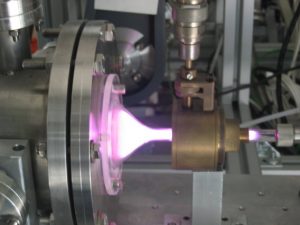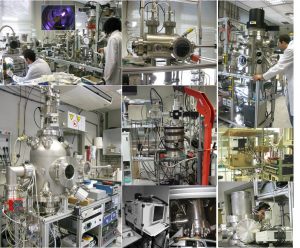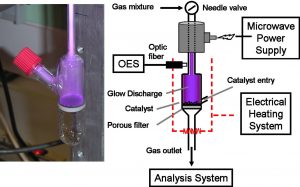Plasma surface functionalization |
|
 |
Plasma is a dry technology intrinsically ecological and environment friendly. It can be used to modify surface properties (at room temperature!)
Several plasma technologies are available at our group:
|
Thin film growth capabilities |
|
 |
Experience in:
Thin films growth equipment:
|
Surface and thin film analysis |
|
|
|
Environmental Applications of Plasma Technology:
|
|
 |
Up to very recently, plasma and catalysis have been considered as separated investigation fields. In the last years, especially in the field of noxious gas treatments, it has been found that synergetic effects can be obtained if heterogeneous catalysts are used in conjunction with plasma processes.
Hydrogen production by reforming of hydrocarbons and alcohols in a dielectric barrier discharge |

